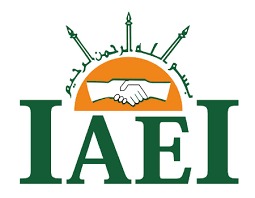The Factors Influencing Behavioural Intention Fintech Lending (Paylater) Among Generation Z Indonesian Muslims and Islamic Consumption Ethics Views
DOI:
https://doi.org/10.30983/es.v7i1.6233Keywords:
Fintech Lending, Paylater, UTAUT2, Z GenerationAbstract
This study seeks to investigate and analyze the factors that influence Generation Z’s use of fintech lending (paylater) in Jakarta, West Java, East Java, Central Java, and North Sumatra. This study employs a descriptive quantitative methodology and questionnaire distribution. The study employed purposive sampling. This study included 200 Generation Z respondents who have utilized fintech lending (paylater) as respondents. The method of data analysis employs Partial Least Square-Structural Equation Modeling (PLS-SEM) and SmartPLS version 3.2.9 software. The variables performance expectation, social influence, hedonic motivation, and habit have a positive and significant effect on behavioral intention, whereas effort expectation, facilitating conditions, and price value do not. In addition to testing the UTAUT 2 model, this research was conducted on Generation Z, where few research results are discussing the use of fintech lending (paylater). Generation Z is the generation that currently dominates the population in Indonesia and will be the next generation of Indonesians; therefore, it is essential to determine what factors play a role in encouraging the use of fintech lending (paylater) among Generation Z.
Abstrak
Penelitian ini tujuannya guna menyelidiki serta menganalisis faktor-faktor yang pengaruhi pemakaian fintech lending (paylater) generasi Z di Jakarta, Jawa Barat, Jawa Timur, Jawa Tengah, dan Sumatera Utara. Penelitian ini menggunakan metodologi kuantitatif deskriptif dan penyebaran kuesioner. Penelitian ini menggunakan purposive sampling. Penelitian ini melibatkan 200 responden generasi Z yang telah memanfaatkan fintech lending (paylater) sebagai responden. Metode analisis data memakai perangkat lunak PLS-SEM dan SmartPLS versi 3.2.9. Variabel ekspektasi kinerja, pengaruh sosial, motivasi hedonis, serta kebiasaan berpengaruh positif juga signifikan pada niat berperilaku, sedangkan ekspektasi upaya, kondisi fasilitasi, dan nilai harga tidak. Selain menguji model UTAUT 2, penelitian ini dilakukan pada generasi Z, dimana hasil penelitian yang membahas tentang penggunaan fintech lending (paylater) masih sedikit. Generasi Z merupakan generasi yang sekarang mendominasi jumlah penduduk di Indonesia dan akan menjadi generasi penerus bangsa Indonesia; Maka dari itu, penting agar tau faktor apa saja yang berperan untuk mendorong penggunaan fintech lending (paylater) di kalangan generasi Z.References
Adirinekso, G. P. (2021). Minat dan Penggunaan Fintech PayLater Pekerja Urban Pelanggan Traveloka dan GoJek Sebelum dan Selama Pandemi Covid 19 di DKI Jakarta. Journal of Management and Business Review, 18(2), 327–342. https://doi.org/10.34149/jmbr.v18i2.283
Alsmadi, A. A., Aalrawashdeh, N., Al-Gasaymeh, A., Al_hazimeh, A. M. d., & Alhawamdeh, L. (2023). Adoption of Islamic Fintech in lending services through prediction of behavioural intention. Kybernetes. https://doi.org/10.1108/K-10-2022-1362
Audina, M., Isnurhadi, & Andriana, I. (2021). Faktor Yang Mempengaruhi Behavioral Intention Transaksi Keuangan Digital ( E-Wallet ). Media Riset Bisnis Dan Manajemen, 21(2), 99–116.
CNN Indonnesia. (2018). Alasan Generasi Milenial Lebih Konsumtif. CNN Indonesia.
Dewi, N. L. P. P., & Gorda, A. A. N. E. S. (2021). Intensi Minat Kaum Milenial Dalam Mengadopsi Layanan Pinjaman Online (Peer To Peer Lending). Jurnal Akuntansi Dan Pajak, 22(22), 1–13.
Ghozali, I. (2016). Aplikasi Analisis Multivariete dengan Program IBM SPSS 23. Badan Penerbit Uniersitas Diponegoro.
Ghozali, I. (2018). Aplikasi Analisis Multivariate Dengan Program IBM SPSS 25 Semarang: Universitas Diponegoro.
Habibullah, E. S. (2018). ETIKA KONSUMSI DALAM ISLAM. Ad Deenar: Jurnal Ekonomi Dan Bisnis Islam, 1(01), 90. https://doi.org/10.30868/ad.v1i01.230
Hair, J. F., Black, W. C., Babin, B. J., & Anderson, R. E. (2010). Multivariate Data Analysis. Hair (7th, 2010).pdf. Pearson.
Hamrul, H., Soedijono, B., & Amborowati, A. (2018). Analisis Perbandingan Metode TAM dan UTAUT dalam Mengukur Kesuksesn Penerapan Sisem Informasi Akademik (Studi Kasus Penerapan Sistem Informasi STMIK Dipanegara Makassar). Seminar Nasional Informatika, 2018(semnasIF), 140–146.
Hasibuan, H. T. (2021). Faktor-Faktor yang Mempengaruhi Minat Menggunakan Layanan Financial Technology Peer To Peer Lending Syariah. E-Jurnal Akuntansi, 31(5), 1201. https://doi.org/10.24843/eja.2021.v31.i05.p10
Hilmi, L. D., & Pratika, Y. (2021). Paylater feature: impulsive buying driver for e-commerce in indonesia. International Journal of Economics, Business and Accounting Research (IJEBAR), 5(2), 63–76.
Ikhsan. (2022). Gen Z dan Milenial Dominasi Peminjam Fintech P2P Lending. IDX Channel.
Kim, S. S., & Malhotra, N. K. (2005). A Longitudinal Model of Continued IS Use: An Integrative View of Four Mechanisms Underlying Postadoption Phenomena. Management Science, 51(5), 741–755. https://doi.org/10.1287/mnsc.1040.0326
Kurniabudi, & Assegaff, S. (2016). Analisis Perilaku Penerimaan EDMODO pada Perkuliahan Dengan Model UTAUT. Jurnal Nasional Teknologi Dan Sistem Informasi, 2(3), 1–10. https://doi.org/10.25077/TEKNOSI.v2i3.2016.1-10
Lin, W. R., Lin, C. Y., & Ding, Y. H. (2020). Factors affecting the behavioral intention to adopt mobile payment: An empirical study in Taiwan. Mathematics, 8(10), 1–19. https://doi.org/10.3390/math8101851
Lubis, R. H. (2022). Penggunaan Dompet Digital dan Wallet Terhadap Budaya Konsumtif pada Masyarakat di Kota Tangerang Serta Pandangan Syariah Tentang Etika Konsumsi. Al-Tasyree: Jurnal Bisnis, Keuangan Dan Ekonomi Syariah, 2(1), 1–10.
Megadewandanu, S., Suyoto, & Pranowo. (2016). Exploring mobile wallet adoption in Indonesia using UTAUT2: An approach from consumer perspective. 2016 2nd International Conference on Science and Technology-Computer (ICST), 11–16. https://doi.org/10.1109/ICSTC.2016.7877340
Mukminin, A., & Wahyudi, R. R. dan H. (2019). Penerapan Model Utaut Untuk Perilaku Pengguna “Paylater†Di Dalam Traveloka. Jurnal Computech & Bisnis, 13(2), 81–90.
Nugraha, A. L. (2018). Islamic Business Ethics and Islamic Microfinance in Pesantren Gontor. Shirkah: Journal of Economics and Business, 2(1).
Pertiwi, N. W. D. M. Y., & Ariyanto, D. (2021). Penerapan Model UTAUT 2 untuk Menjelaskan Minat dan Perilaku Penggunaan Mobile Banking. E-Jurnal Akuntansi, 31(10), 2569. https://doi.org/10.24843/eja.2021.v31.i10.p13
Pratiwi, W., Mooduto, A., & Mariam, I. (2020). Penerimaan dan Penggunaan OVO Paylater dengan Menggunakan Model UTAUT. Jurnal Administrasi Profesional, 1(2), 8–15.
Puteri, H. E., Arinda, N., Dewi, S., & Sari, G. (2022). Self-Control and Consumptive Behavior Control in Purchasing Internet Services for Social Networking Among Muslim Millennials. European Journal of Humanities and Social Sciences, 2(6), 118–129. https://doi.org/10.24018/ejsocial.2022.2.6.361
Putra, G., & Ariyanti, M. (2017). Pengaruh Faktor-Faktor Dalam Modified Unified Theory Of Acceptance And Use Of Technology 2 (Utaut 2) Terhadap Niat Prospective Users Untuk Mengadopsi Home Digital Services Pt. Telkom Di Surabaya. Jurnal Manajemen Indonesia, 14(1), 59. https://doi.org/10.25124/jmi.v14i1.352
Rahmatillah, intan novirani. (2018). Analisis Pengaruh Perilaku Penggunaan Teknologi Fintech Pada Ganerasi Milenial Di Kota Bandung. Seminar Nasional VII Manajemen & Rekayasa Kualitas 2018 ANALISIS, B5-1-B5-8.
Rakhmah, D. N. (2021). Gen Z Dominan, Apa Maknanya bagi Pendidikan Kita? Pusat Standar Dan Kebijakan Pendidikan.
Sakitri, G. (2018). Selamat Datang Gen Z, Sang Penggerak Inovasi! Prasetiya Mulya Journal.
Soegesty, N. B., Fahmi, I., & Novianti, T. (2020). Kajian Faktor Yang Memengaruhi Adopsi Sistem Pijaman Peer To Peer Lending. Jurnal Manajemen Teknologi, 19(1), 59–79. https://doi.org/10.12695/jmt.2020.19.1.4
Tak, P., & Panwar, S. (2017). Using UTAUT 2 model to predict mobile app based shopping: evidences from India. Journal of Indian Business Research, 9(3), 248–264. https://doi.org/10.1108/JIBR-11-2016-0132
Venkatesh, Morris, Davis, & Davis. (2003). User Acceptance of Information Technology: Toward a Unified View. MIS Quarterly, 27(3), 425. https://doi.org/10.2307/30036540
Venkatesh, V., Thong, J. Y. L., & Xu, X. (2012). Consumer Acceptance and Use of Information Technology : Extending the Unified Theory. MIS Quarterly, 36(1), 157–178.
Walangitan, P. G. M., Lapian, J. S. L. H. ., & Sumarauw, J. S. . (2020). Perbedaan Fintech Peer To Peer Lending Antara Generasi X Dan Generasi Y Dalam Model Behavioral Intention Di Manado. JMBI UNSRAT (Jurnal Ilmiah Manajemen Bisnis Dan Inovasi Universitas Sam Ratulangi)., 7(3), 640–656. https://doi.org/10.35794/jmbi.v7i3.31428
Wulandari, S. T., & Nasik, K. (2021). Menelisik Perbedaan Mekanisme Sistem Peer to Peer Lending pada Fintech Konvensional dan Fintech Syariah di Indonesia. Nuris Journal of Education and Islamic Studies, 1(2), 66–90.
Downloads
Published
Issue
Section
Citation Check
License
Copyright (c) 2023 Siti Aisyah Aisyah, M. Ikhsan Harahap, Nurbaiti Nurbaiti Nurbaiti, Mustapa Khamal Rokan

This work is licensed under a Creative Commons Attribution-ShareAlike 4.0 International License.
Authors who publish with this journal agree to the following terms:
- Authors retain copyright and grant the journal right of first publication with the work simultaneously licensed under a Creative Commons Attribution-ShareAlike 4.0 International License that allows others to share the work with an acknowledgment of the work's authorship and initial publication in this journal.
- Authors are able to enter into separate, additional contractual arrangements for the non-exclusive distribution of the journal's published version of the work (e.g., post it to an institutional repository or publish it in a book), with an acknowledgment of its initial publication in this journal.
- Authors are permitted and encouraged to post their work online (e.g., in institutional repositories or on their website) prior to and during the submission process, as it can lead to productive exchanges, as well as earlier and greater citation of published work (See The Effect of Open Access).











